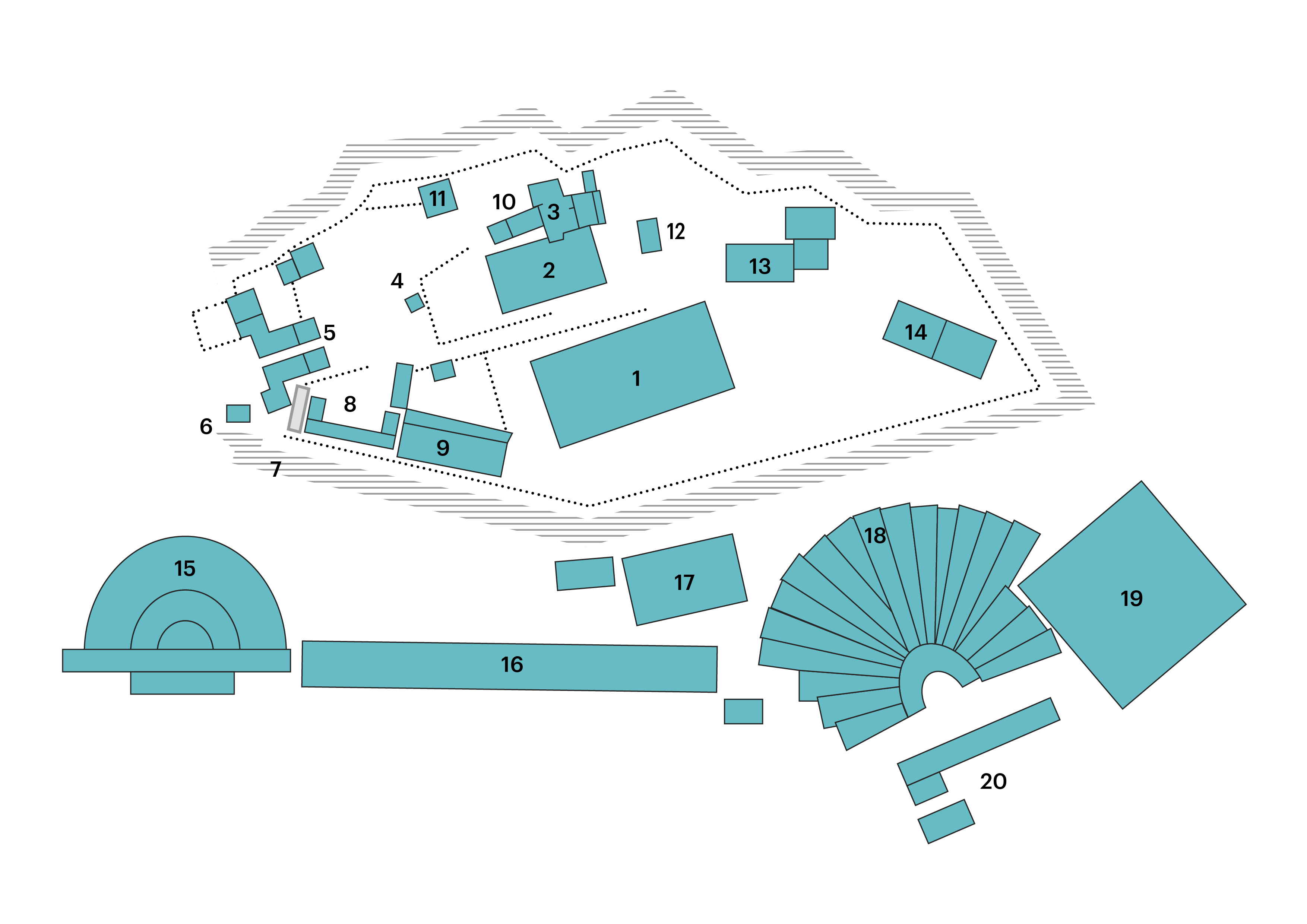Athens Acropolis map | A guide to navigating around the iconic archaeological site
The Acropolis of Athens continues to be an enduring symbol of the city's ancient culture and history. The ruins of these ancient Greek structures, standing on a hill overlooking the city, are one of the most-visited attractions in the world. The Acropolis site comprises a cluster of buildings such as the Parthenon, the Temple of Athena Nike, and the Erechtheion, among others. If you are planning to visit without a guide, it is best to keep an Acropolis map handy so that you can navigate the site with ease.

Acropolis map – Index
1. Parthenon
2. Old Temple of Athena
3. Erechtheum
4. Statue of Athena Promachus
5. Propylaea
6. Temple of Athena Nike
7. Eleusinion
8. Sanctuary of Artemis Brauronia
9. Chalkotheke
10. Pandroseion
11. Arrephorion
12. Altar of Athena
13. Sanctuary of Zeus Polieus
14. Sanctuary of Pandion
15. Odeon of Herodes Atticus
16. Stoa of Eumenes
17. Sanctuary of Asclepius
18. Theatre of Dionysus Eleuthereus
19. Odeum of Pericles
20. Temenos of Dionysus Eleuthereus
What to see at the Acropolis of Athens

Odeon of Herodes Atticus
This ancient theater was built by Herodes Atticus in memory of his wife Regilla in AD 161. Live performances are still held at this theater today during the summertime.

Temple of Athena Nike
The Temple of Athena Nike, located on the south side of the Propylaia, is a temple dedicated to Nike, a form of Athena believed to be the goddess of victory in Greek mythology.

The Parthenon
Built in the mid-5th century BCE, the Parthenon is the most prominent temple on the hill of Acropolis. It is dedicated to the goddess Athena Parthenos.

Erechtheion
Built from 421 to 395 BCE, the Erechtheion complex contains many ancient sanctuaries. The Temple of Athena Polias lies on the eastern side, and on the west, you will find the Tomb of King Erechtheus.

Old Temple of Athena Polias
Located south of Erechtheion, the Old Temple of Athena was built in the early 6th century BC. It is dedicated to Athena Polias, the patron goddess of the city.

Pandroseion
Named after the daughter of Athens' first king, the Pandroseion commemorates Athena's gift to the city – a sacred olive tree symbolizing her victory over Poseidon. An olive tree planted here in modern times pays tribute to Athens' enduring presence.
Book Acropolis tickets & tours
Frequently asked questions about Athens Acropolis map
The Acropolis of Athens is an extensive site, with many ancient temples, ruins, and structures to explore. Using an Acropolis map makes it easier to navigate the site, especially if you are exploring on your own, without a tour guide.
You can buy your Athens Acropolis tickets online. Booking online is convenient, allowing you to save time and money, and to do it from the comfort of your home. You can also avail of great deals, discounts, and complimentary add-ons on your tickets when booking online.
All visitors need tickets to enter the Acropolis of Athens archaeological site. Once there, use the Acropolis map or take a guided tour or an audio guide to seamlessly navigate around the complex.
The Acropolis of Athens is partially accessible by wheelchair. Wheelchair users and visitors with mobility issues can make use of an Acropolis map and the wheelchair-friendly routes laid out through the site to navigate the attraction.
There are two Acropolis entrances – the main entrance located at the western end, and the side entrance (also known as the Dionysus Theater entrance) located at the south-eastern corner of the site.


